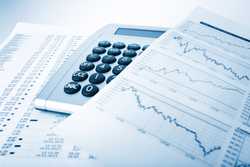Dow vs Nasdaq vs S&P: What's The Difference?

Our evaluations and opinions are not influenced by our advertising relationships, but we may earn a commission from our partners’ links. This content is created by TIME Stamped, under TIME’s direction and produced in accordance with TIME’s editorial guidelines and overseen by TIME’s editorial staff. Learn more about it.
On Wall Street, there are perhaps no more important barometers of the strength or weakness of the U.S. stock market—and, some say, the U.S. economy as a whole—than the S&P 500, Nasdaq Composite and Dow Jones Industrial Average indices.
In general, these indices “provide investors with a way to track the performance of different segments of the U.S. stock market and compare the performance of individual stocks and portfolios to the broader market,” said Derek Miser, CEO of Miser Wealth Partners in Knoxville, Tennessee. “They are widely followed by investors, financial professionals, and the media as indicators of the health of the U.S. economy and the global financial markets.”
So, when one, two, or all three of the indices take big swings on any given day—with the prices of stocks for publicly traded companies rising and falling—investors, financial professionals, and the media pay attention.
Throughout the trading day, each index moves up or down according to its own point system. While the S&P 500 may close the trading day at 4,000 points, the Nasdaq might land at 12,000 and the Dow at 33,000.
While the S&P 500, Nasdaq Composite and Dow Jones Industrial Average (DJIA) measure buying and selling activity on the U.S. stock market, they operate in different ways.
The S&P 500, formally known as the Standard & Poor’s 500, launched in 1957; its predecessors date back to the late 19th century. The index features the stocks of about 500 major companies, many of which are household names. Those names include Alphabet (owner of Google), Amazon, Apple, Meta Platforms (owner of Facebook), Microsoft, and Tesla.
“The S&P 500 is widely regarded as a benchmark for the U.S. stock market,” Miser said, “and is used by investors and financial professionals to gauge the health of the overall economy.”
The S&P 500 represents around 80% to 85% of the U.S. stock market.
A company must adhere to several criteria to be added to the S&P 500:
Breakdown of business sectors in S&P 500
| Business sector | Share of S&P 500 |
|---|---|
Information technology | 26.1% |
Healthcare | 14.2% |
Financials | 12.9% |
Consumer discretionary | 10.1% |
Industrials | 8.7% |
Communication services | 8.1% |
Consumer staples | 7.2% |
Energy | 4.6% |
Utilities | 2.9% |
Materials | 2.6% |
Real estate | 2.6% |
The Nasdaq Composite index, which dates back to 1971, comprises nearly all of the securities traded on the Nasdaq Stock Market. Tech companies make up the biggest chunk of stocks included in the index, although a range of business sectors is represented.
To be part of the index, a company’s U.S. securities must be listed exclusively on the Nasdaq market. Among the most recognizable companies in the Nasdaq Composite index are Alphabet, Amazon, Apple, Meta Platforms, Microsoft, Pepsico, and Tesla.
The Nasdaq imposes no geographic or market cap requirements on companies.
The Nasdaq Composite is often used as a benchmark for the performance of stocks of tech and growth companies.
Breakdown of business sectors in Nasdaq Composite
| Business sector | Share of Nasdaq Composite |
|---|---|
Technology | 48.9% |
Consumer discretionary | 17.2% |
Healthcare | 10.2% |
Industrials | 6.2% |
Financials | 5.2% |
Telecommunications | 4% |
Consumer staples | 3.8% |
Energy | 1.4% |
Utilities | 1.3% |
Real estate | 1.2% |
Basic materials | 0.53% |
Founded in 1896, the Dow Jones Industrial Average is the grandaddy of U.S. stock indices.
Also known as the Dow Jones or simply the Dow, the index tracks the performance of 30 U.S. “blue chip” companies in industries except transportation and utilities.
One of the most widely recognized indexes, the Dow offers a snapshot of U.S. stock market performance.
Although stock selection for the Dow is not governed by a strict set of rules, decision-makers focus on a company’s reputation, history of sustained growth, interest to investors, and representation of the broader market when choosing Dow stocks, according to S&P Dow Jones Indices.
“Replacing a [Dow] stock generally requires a significant change in a constituent company’s core business or a major corporate action, such as an acquisition,” adds S&P Dow Jones Indices, which controls the Dow and the S&P 500.
Breakdown of business sectors in Dow Jones Industrial Average
| Business sector | Share of The Dow |
|---|---|
Financials | 20.2% |
Healthcare | 19.3% |
Information technology | 17.2% |
Industrials | 14.6% |
Consumer discretionary | 13.8% |
Consumer staples | 7.8% |
Energy | 3.2% |
Communication services | 2.8% |
Material | 1.1% |
At their core, the S&P 500, the Nasdaq Composite, and the Dow measure the performance of collection of stocks. More broadly, they can be indicators of the health of the U.S. stock market and the economy.
Each index comprises its own set of stocks. For instance, the S&P tracks about 500 stocks, while the Dow tracks 50.
Each index features a different mix of business sectors. For example, nearly 50% of the Nasdaq Composite comprises tech companies, whereas the tech sector’s share of the Dow is 17.2%.
As Miser explains, the S&P 500 and Nasdaq Composite are weighted toward market cap, meaning the weight of each company’s presence in the index matches its market cap (the total value of a company’s outstanding shares). By contrast, the Dow is a price-weighted index, meaning the weight of each company’s presence is determined by its stock price, not by its market cap.
Miser said no index is better than another for investing. Which index an investor favors depends on their investment goals, risk tolerance, and investment strategy. An investor might decide to concentrate on stocks in just one index or might trade stocks in all three indexes, he pointed out.
“The S&P 500 is the broadest of the three indexes, covering a wide range of industries. Investors who are looking for a diversified portfolio may choose to invest in the S&P 500, as it provides exposure to a broad range of companies,” said Miser.
Meanwhile, investors seeking exposure to the tech sector might go with the Nasdaq Composite, he added.
As for the Dow, this index comprises 30 large companies that are viewed as blue-chip stocks. “Investors who are looking for exposure to well-established, stable companies may choose to invest in the Dow,” Miser said.
Miser suggested that an investor who follows a more passive strategy might invest in an index fund tied to the S&P 500, while an investor with a more aggressive strategy may opt to buy and sell individual stocks that are part of the Nasdaq Composite or the Dow.
Although the S&P 500, the Nasdaq Composite, and the Dow are well-established stock indexes, they’re not the only ones on Wall Street. Other indexes include:
A price-weighted index puts greater emphasis on stocks with high prices, while a market-cap–weighted index puts greater emphasis on stocks of companies with high value (market caps).
Based on its track record, the S&P 500 looks like it could be a solid long-term place for people to invest. From 1992 through mid-2022, the annualized return for the S&P 500 stood at 9% (6.8% if adjusted for inflation). That’s in line with an average inflation-adjusted return of 6.5% to 7% per year for stocks since 1800, according to consulting firm McKinsey & Co.
Looking at it another way, $100 invested in S&P 500 stocks in 1928 would have amounted to $624,535 (including reinvested dividends) in 2022, according to New York University’s Stern School of Business.
Some experts say the S&P 500 is the best “proxy” for the stock market, helping make it an index that’s tough to beat. That’s thanks in part to its inclusion of big-name stocks from a broad array of business sectors.
An S&P scorecard shows that, over a 15-year span, 93% of large-cap investment funds in the U.S. had underperformed the S&P 500 as of December 2022. And none other than investment guru Warren Buffet recommended in 2017 that investors consistently buy—“through thick and thin”—shares of a low-cost index fund tied to the S&P 500.
The information presented here is created by TIME Stamped and overseen by TIME editorial staff. To learn more, see our About Us page.



